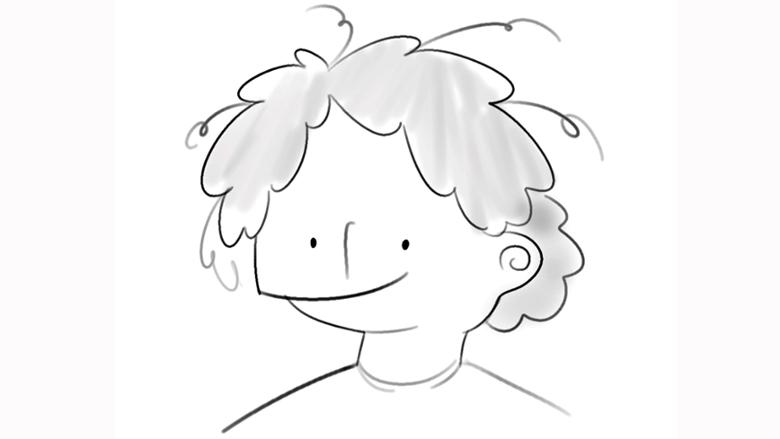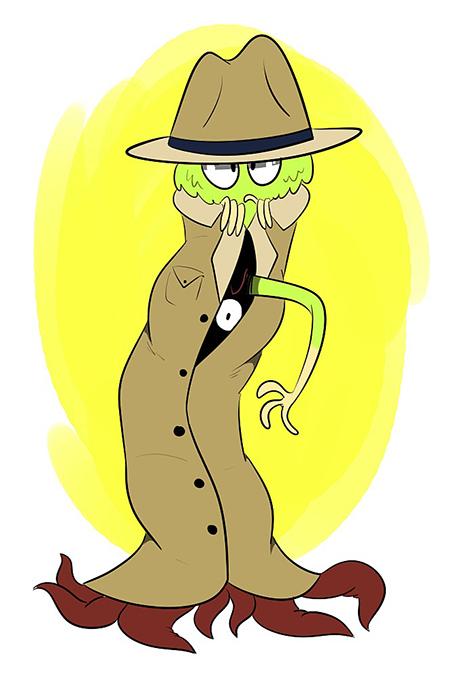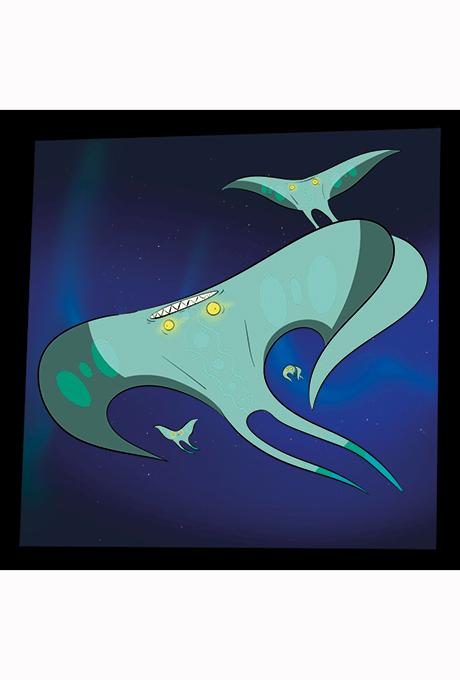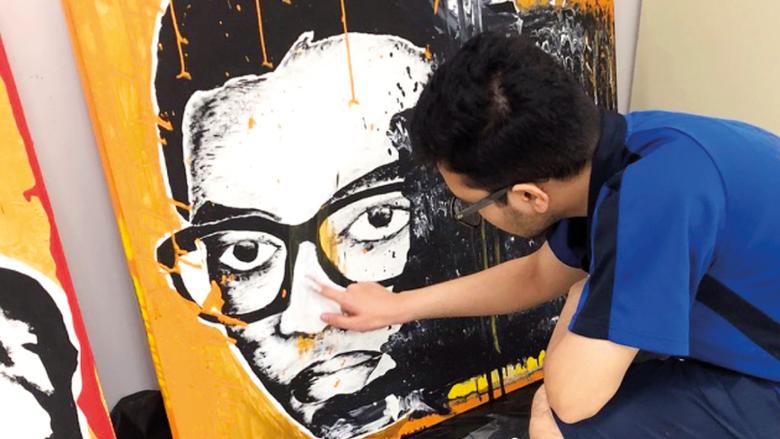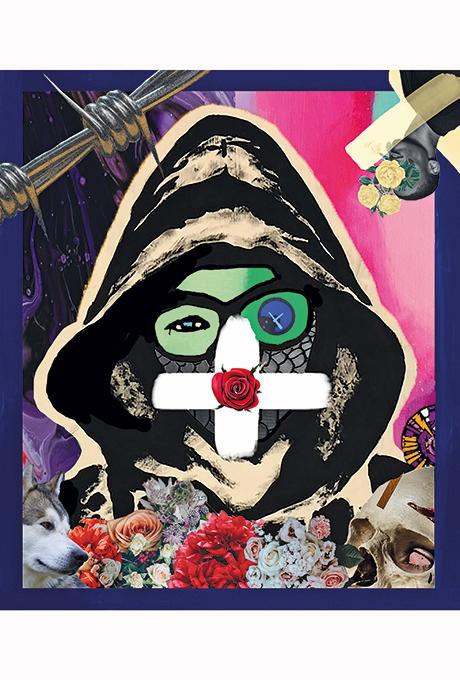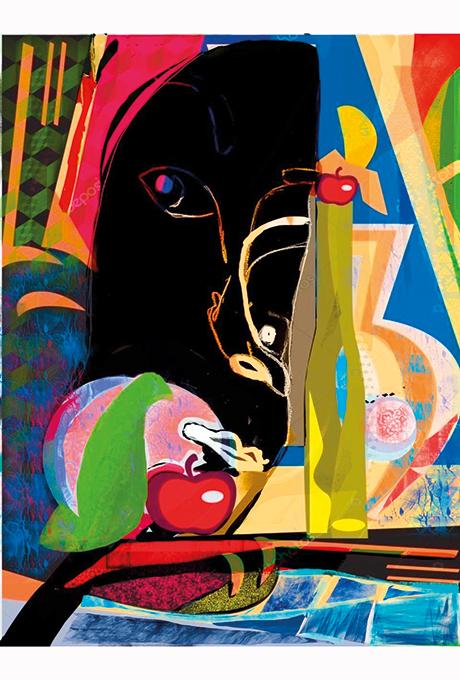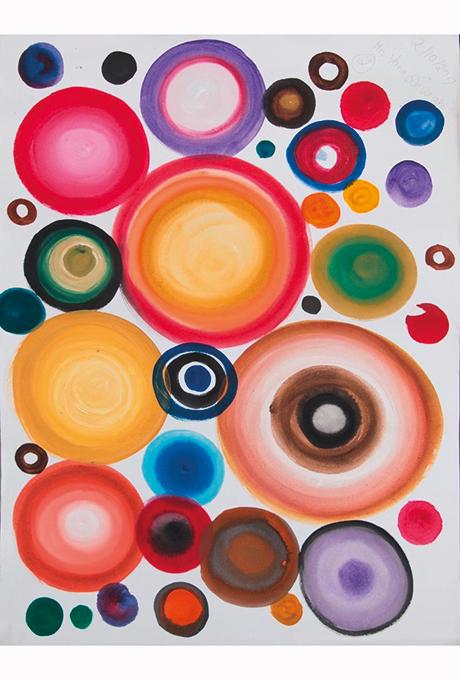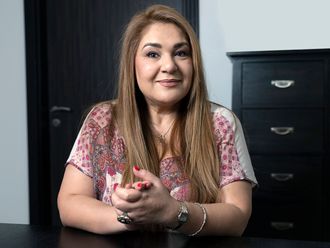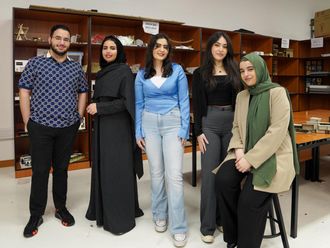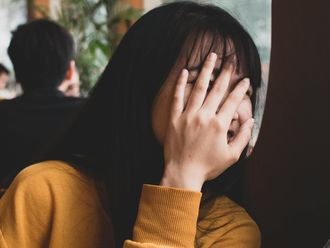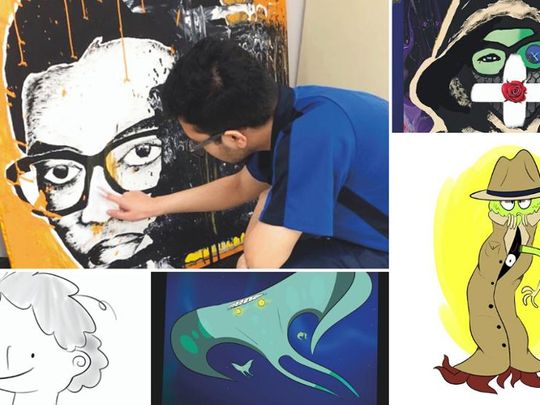
When her son AJ was around five, Dubai mum Anitha Jaikrishnan noticed the drawings he spent so much time on had started taking a life of their own – they often depicted strange, fascinating characters that seemed so very realistic, and with a depth beyond his years.
AJ was diagnosed with autism at age four, and over time Anitha had been finding it difficult to have a conversation with him, “as he was unable to communicate what he really wanted to say,” she says. But remarkably, with his artwork Anitha saw a glimpse of a new beginning, and what she calls a lead-in to getting through to him.
So rather than question or analyse those out-of-the-world creatures, Anitha started encouraging the drawings – and immediately noticed a difference. “He would love to talk about the different aspects of the creatures he drew,” she says. “His art allowed us to engage with him on a very intimate level when he did not want to communicate. I remember buying him scores of sketchbooks (which I still have), filled with drawings of dragons in different 3D perspectives.”
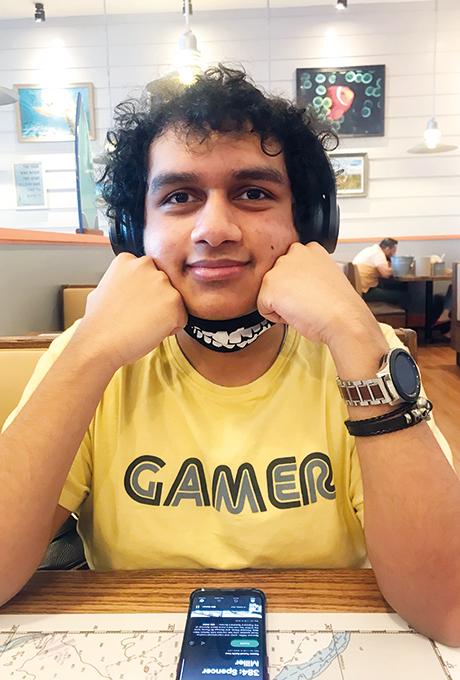
Slowly, AJ started changing from the very aloof child he used to be as he started interacting more and more through his interests. “When he was 11, he got a Wacom Intuos drawing tablet, which introduced him to the world of digital art – and there was no looking back,” Anitha says. “Alongside a tremendous boost in his social behaviour, we saw art take a massive role in his life.”
Anitha credits those creative endeavours for bringing AJ to who he is today – “an extremely articulate young man with his own views of the world, and ambitious to boot. Today, the 18-year-old is in IB with a major in Visual Arts, and has come a long way from the uncommunicative boy he used to be.”
Anitha’s depiction of her son is in plenty evidence with the effusive way AJ describes art – “it’s like baking a cake. It’s customisable and versatile, there are so many different ways to make it and the end result – unique and delicious,” he says. “It is a long process, yet the same process is calming and therapeutic too. You put your heart and soul into every layer, and you end up creating something wonderful with your own hard work. That’s what art is to me – labour born from love.
AJ acknowledges that drawing helped him with his struggles, giving him something fun to partake in as he spent a lot of his childhood homeschooled. “I ended up deriving tremendous joy from doodling and still do to this very day. I was a very bored person with too much idle time back then and had trouble coming up with good ideas, but drawing taught me to see the wonder and inspiration that could be taken from everything.”
Quite like AJ, Dubai teen Varun Sanjay Acharya’s first interaction with art came early, when his mother taught him to draw at the age of four – just lines and shades. “But importantly,” Varun says, “the reason for her teaching me wasn’t so I’d be good at it as a subject – she taught it to me as a medium of controlling my emotions and communicating effectively with others. She wasn’t able to pursue art as a career, but it was a passion for her and she’d gone to art classes over many years, so she knew the value of it.”
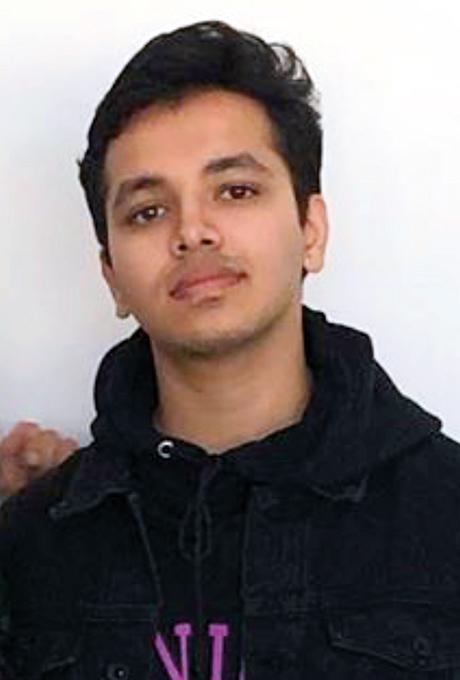
That early lesson served as a lifeline when his teenage years came knocking. In high school, among peers from diverse backgrounds, he struggled to effectively communicate his ideas and thoughts, leaving him feeling lonely and secluded. He had friends, but the interactions felt artificial and forced, which led to him keeping them to a minimum. But the lack of socialising at an age that’s formative for future health brought about its own set of problems, and Varun soon realised he had no control over how he was releasing his emotions, resulting in anger, frustration and a lot of passive eating.
“The feeling of loneliness and sorrow had pushed me to a corner where the only cure I saw was to vent my anger at boxing classes and through verbal taunts. I did not know whom I could turn to for help and guidance.”
Then, he rediscovered art. “In grade 11, going through the course catalogue, I saw the IB Visual Arts programme at Gems Modern Academy as a way to escape the multitude of emotions I was feeling.”
Soon, Varun found himself releasing his emotions onto the canvas rather than on others. “While I was painting I inhabited a good mind space – I felt myself capable of expressing my pain and/or other emotions without internalising the pain. My fidgety, hyperactive tendencies transformed into brush strokes on the canvas. It liberated me from the shackles of loneliness and sorrow. The time with art helped me think about what I wanted others to remember me as – I saw myself get calmer, more at ease with my surroundings, and it helped me socialise with my peers and teachers on an emotional level, creating meaningful relationships.”
Protecting their mental health
It’s not about fostering creativity or developing talent so as to increase the chances of becoming the next Van Gogh – manipulating a paintbrush can help children emotionally and socially, working as a mode of self-expression. It’s also a path to self-awareness, as many teens – and indeed adults – deny their own feelings quite often, and art can help them process their emotions and resolve inner conflicts. Psychologists say honest expression can in turn lead to better mental health. Creating something from scratch also boosts self-confidence – something that many adolescents admit to struggling with. It’s a tool for communication – not using language to verbalise their emotions can help youngsters feel safe about expression.
In a recent report, paint manufacturer Caparol Arabia listed benefits from painting that range from effective communication to mood enhancement. “Painting makes it easier to communicate their ideas, express your feelings and emotions. It is a highly recommended activity for children who are often encouraged to paint as it helps them be better prepared for school tasks,” says Mowaffaq Balish, Commercial Director at Caparol Arabia. “It also enhances emotional intelligence and mood. Colours can act as therapy and expressing your emotions through art can help you better understand how you feel. As you paint you can experience joy, peace, love and happiness – it plays a positive role on your personality and emotional stability.”
It’s about helping the artist get better, not the art.
This approach is at the heart of Lotus Educational Institute in Dubai (www.Lotus.ae), which started using art as therapy in the UAE in 2000. With a team of PhD holders in arts education, complementary health and clinical psychology, the institute has been using art to help both adults and kids achieve various levels of well-being and healing, employing meditative art for relaxation, self-awareness and self-development, and in the process also letting students find hidden talents and creativity.
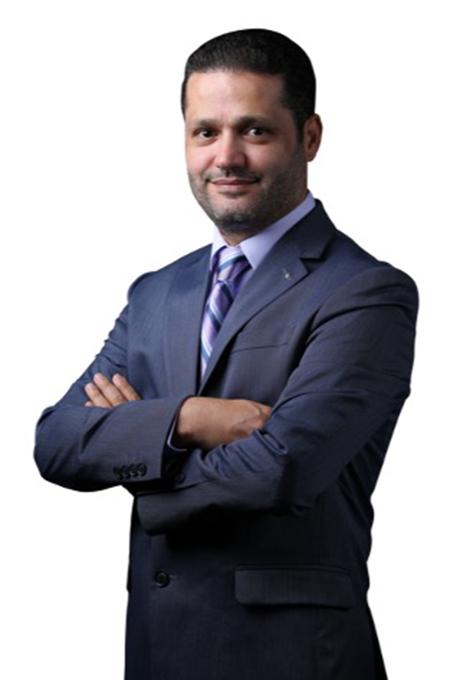
“Any shape or type of art that presents any amount of stable calmness, inner-awareness, and creative consciousness – that’s the real definition of art with the effect of healing and well-being, also usable as therapy,” says Dr Mohammad Ramin Zia, founder and chairman of Lotus. “Art is a powerful healing method for preventing mental disorders by controlling physical and emotional reactions, and is quite helpful as a therapeutic tool for helping patients who are suffering from such a disorder, no matter if they are under psychiatric medication or just taking psychological consultation; it helps with emotional, mental, and social difficulties. Practicing art helps bring about stable self-confidence, and spiritual energy and relaxation.”
Transitions and relationships
A show-rather-than-tell approach can be an especially valuable mode of treatment for anxiety, depression and learning disabilities among children. As they navigate transitions, relationships and social media, youngsters can find it quite difficult to cope, especially among the hundreds of nationalities that make up the UAE, fielding different communication modes, cultures, languages and behaviours. “Reading hidden codes of kids’ paintings is one of the best ways to understanding them for diagnosing their mental status,” Dr Zia says. “All children use drawing or painting in some way to communicate with us even in a mode of silence. Art can help them de-stress and express out thoughts and emotions without the scare of judgment. Just teaching them the soft fundamentals of art, without any stress on them to be a great artist, with individual consultation sessions time to time can make a huge difference to their well-being.”
Dr Zia has seen this play out even with those teens who depend on medications to manage their anxiety. “Where they have been provided art therapy, including training classes and consultation sessions as a complementary health service, we see it helps to stabilise patients’ mental health situation. After a while they usually reduce medications (under their physicians’ prescriptions), achieving more stability, hope, happiness and confidence.”
And the lessons are transferable to adults too. Dr Zia says art can be especially useful as we live through a pandemic, with its accompanying problems of irregular sleep patterns, fear of losing our job, instability, sickness or possible death. He laments the attention to the outer rather than a focus on the inner consciousness – adults have “forgotten their nature of expressing out their thoughts and emotions in a natural way because of their busy lives. Working with colours and other fine art tools, they are comprehensive mediums to relax and refresh your body and mind.”
AJ, who introduces himself as a soon-to-be concept artist/character designer and posts his art on his Instagram page (@howtobeasquid), swears by the process. “Anything you make with love can help calm you down if you really put your mind to it because the process gives you time to reflect. It’s a lot like a miniature voyage you embark on through your own mind.”
Varun, who also plans on pursuing art as a career in the future studying Visual and Performing Arts Management and Media at the University of Toronto, agrees. “There seems to be a popular misconception that art is feminine, or for the soft-hearted person. No, art is for the person who is brave enough to face themselves and their demons. Art is not a pill that eliminates the pain, but it teaches you the importance of experiencing life for what it is and gives you the courage to openly show the world the scars that made you who you are.”



